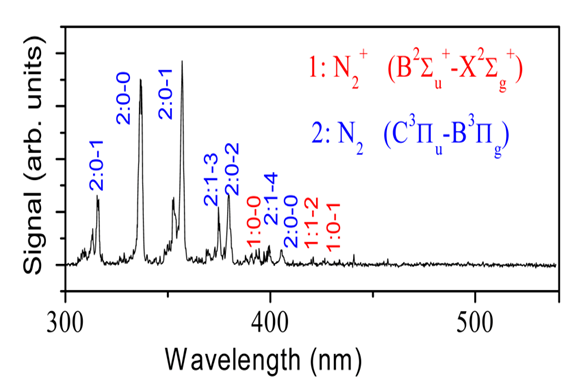Inventors at Georgia Tech have used a similar (remote) LIDAR technique to detect the presence of the nuclear materials by measuring the local concentration of N2 ionized molecules. A laser strobe (short pulses of specific wavelength) is aimed at the volume surrounding the potential radioactive source near the ground level, causing the excited/ionized nitrogen molecules to fluoresce. A receiver, (telescope co-located with the laser) subsequently collects the fluorescence photons, further converting it into an electrical signal by a photodetector. A narrowband optical filter reduces the background noise from solar and artificial illumination.
The intensity of the received signal is then translated into the concentration of excited/ionized N2, and, ultimately, into the measure of the nuclear material radiation/presence. The technology enables radioactive materials detection by measuring (escaping) ionized air by using either direct detection or standoff LIDAR.
- Air-ionization measurement, molecular resonance, excitation and fluorescence
- Remote (LIDAR) probing/detection of inaccessible (or hidden) radiation sources
- On-site (Direct) ionization detection/monitoring (Ionized air pump) of radiation materials
The method could become an effective technique for: nuclear facility monitoring, radioactive WoMD detection, Port Authority/ DTRA monitoring, and both urban and field military applications.
Nitrogen (N2) comprises approximately 78% of the atmosphere at ground level, substantially contributing to excited or ionized [N2+] molecules produced by radiation from nuclear materials. At the same time, there is a possibility of measuring the density of excited or ionized nitrogen remotely. Thus, the aurora events in Earth's ionosphere have been investigated before by using light detection and ranging (LIDAR) techniques.

